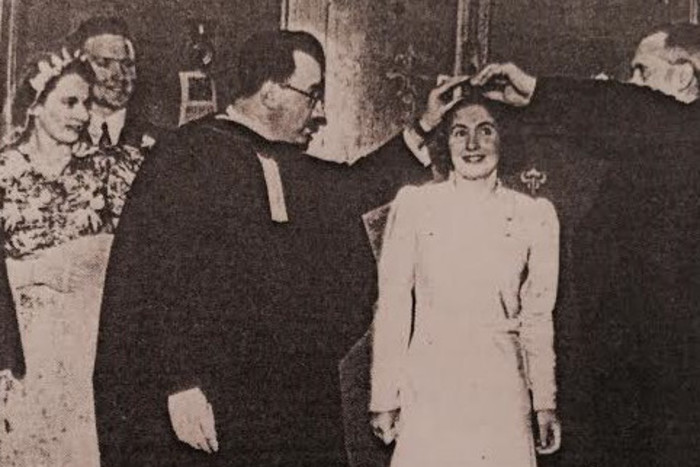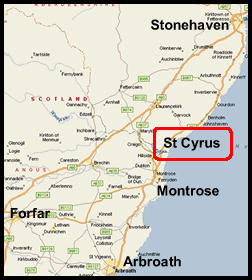
Scotland has some quite bizarre traditions and this one is truly odd. It is a tradition specific to St Cyrus in Aberdeenshire.
It was the sight of a couple in the snow on their wedding day that led a civil servant to establish one of Scotland’s quirkiest wedding day traditions. John Orr, the Accountant General of Madras, is said to have been so moved by the newlyweds struggling in the cold conditions in his home village of St Cyrus, Aberdeenshire, that he offered them some money.

From a one off gift to help out this couple in the cold, Mr Orr was to continue this donation to struggling newly weds. He was a very wealthy man and in his will he left his money to continue this tradition – but stated some very clear rules about who this annual gift of money should be given to.
Mr Orr died in 1845 after which the interest from the money in the bank was to be split five ways.
Four parts of it were split between four brides – the tallest, the shortest, the youngest and the oldest. The measuring stick was to used to find the worthy “Dowry Bride of St Cyrus”.
Then the final fifth of the interest was to be distributed amongst the poor of the village. A ledger in the church shows a list of the lucky newlyweds, which have been recorded in John Gavin’s The Dowry Brides of St Cyrus.
Records from 1887 show a 30-year-old Mrs Bain qualified as the eldest bride, with 21-year-old Mrs Jolly recorded as the youngest. That year, Mrs Gourlay was the tallest and Mrs Elder the smallest. While the heights weren’t recorded in 1887, the following year records show Mrs Gibon – nee Beattie – was the shortest bride, at 4ft 11ins. The tallest was Mrs Beattie – nee Smith – who was measured at 6 ft 4 and one-tenth inches, showing that accuracy was everything in the quest to be a Dowry Bride.
Each bride in 1888 received £6 and a little over nine shillings. In his book, Mr Gavin said this payment could equate to around six months wages for a general farm labourer in the middle 1800s, with the dowry worth the equivalent of up to £6,000 today. The dowry was rated as a “welcome boom by the Female sex” in the church’s ledger of the Orr request.
Following Orr’s death the legitimacy of this settlement was questioned in the Court of Session and on December 10 1867, a judgement was delivered. The settlement was found to be “whimsical and capricious” but the court allowed it to stand. Mr Mone, in his judgement, said it down to the Parish to administer the distribution of the bequest so that a bride could only take one share of the dowry, regardless of whether she was both the oldest and the tallest, for example. Mr Gavin, in his publication The Dowry Brides of St Cyrus, said: “I think John Orr wanted to select four St Cyrus brides, with a selection procedure based purely on chance. “It is not dependent on a means test or any “moral criterion, such as attendance at worship, or even virginity. “There can be no cheating; nor does the Minister have to apply the judgement of Solomon in deciding between the recipients. “John Orr is to be commended for producing a foolproof system of selecting four bridges, at random, that has stood the test of time. In the 1950s, the dowry was still considered a substantial amount of sum, with Mr Gavin reporting it was the equivalent of two-weeks wages.
However in 1991, as the value of the money remaining in the bank plummeted, the Kirk Session decided to replace the cash with a small engraved vase. So to continue this tradition in some way.
Mr Gavin added: “Assuming people continue to get married, brides will always be a certain age and height, and I see no reason why this bequest should not continue for many years.” Weddings are still held at St Cyrus, but in dwindling numbers. To have four at the church in a year – to fulfil Orr’s bequest to its full – would now be fairly unlikely.
The tradition of giving a vase to the tallest, shortest, youngest and oldest bride in St Cyrus continues to this day.

This was very interesting.